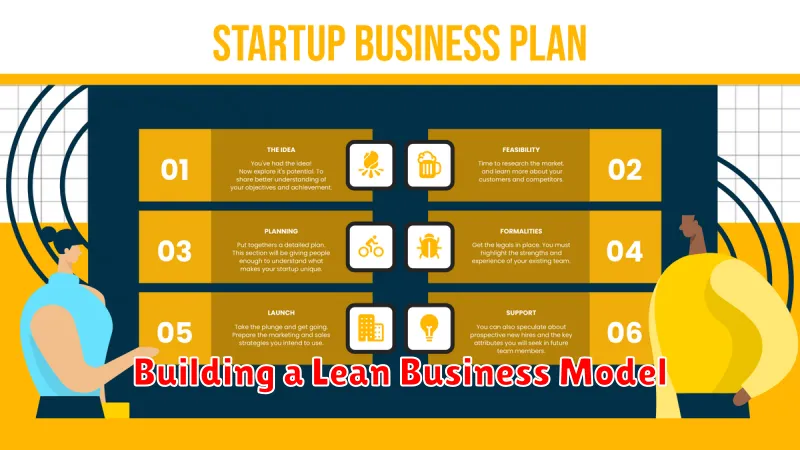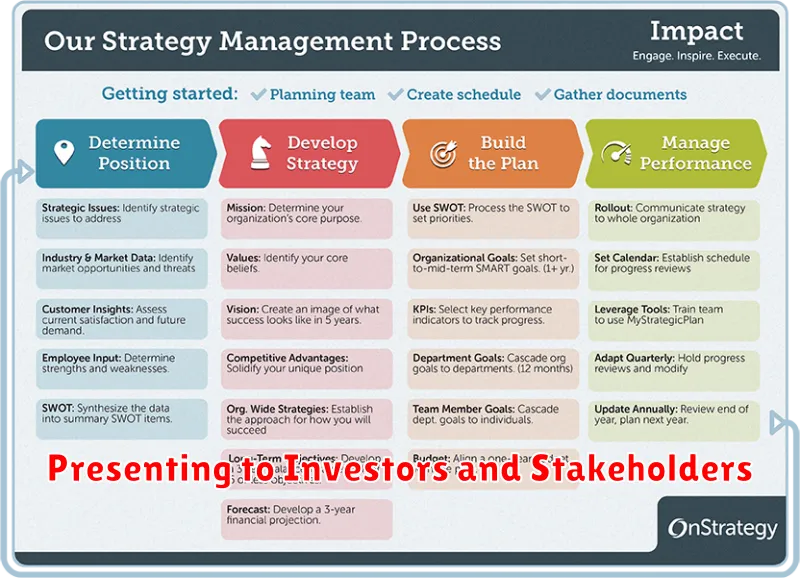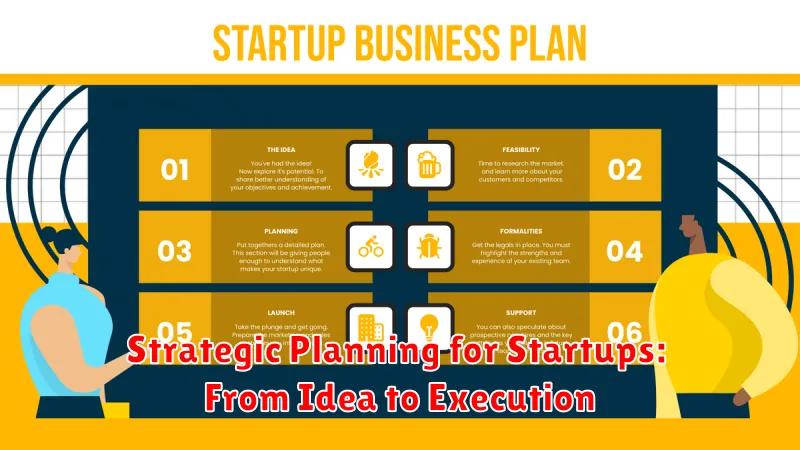Launching a successful startup requires more than just a brilliant idea. It demands meticulous strategic planning, a roadmap that guides the venture from its initial conception to effective execution. This article provides a comprehensive guide to strategic planning for startups, covering crucial aspects from defining your business idea and target market to building a robust business plan and securing funding. Whether you are at the idea stage or ready to launch your startup, understanding the principles of strategic planning is paramount for achieving sustainable growth and navigating the challenges of the competitive marketplace.
This guide breaks down the complexities of startup strategic planning into manageable steps, offering practical advice and actionable insights. We will explore the importance of conducting thorough market research, developing a compelling value proposition, and crafting a go-to-market strategy. Furthermore, we will delve into the essential elements of a startup business plan, including financial projections, operational strategies, and risk mitigation plans. By following this comprehensive guide, aspiring entrepreneurs and startup founders can equip themselves with the knowledge and tools necessary to transform their innovative ideas into thriving businesses through effective execution of a well-defined strategic plan.
Defining Your Vision and Mission
This stage is crucial for setting the direction of your startup. A vision statement paints a picture of your company’s desired future. It answers the question: “What do we want to become?” Keep it concise and aspirational.
Your mission statement defines your company’s purpose and how you will achieve your vision. It answers: “What do we do and why?” This statement should be clear, actionable, and communicate your core values.
Clearly defined vision and mission statements provide a framework for all future decisions and guide your team towards a common goal.
Understanding Market Fit
Achieving product-market fit is crucial for startup success. It signifies that you’ve built a product or service that effectively meets the needs of a defined target market. This isn’t simply about having a “good” product; it’s about having a product that resonates strongly with a specific group of customers and solves a real problem for them.
Key indicators of market fit include strong organic growth, positive customer feedback, and high retention rates. Lack of market fit can lead to wasted resources and ultimately, failure. Therefore, it’s essential to constantly assess and iterate based on market feedback.
Mapping Out Your Go-To-Market Strategy
A well-defined go-to-market (GTM) strategy is crucial for startup success. This strategy details how you will reach your target customers and deliver your value proposition effectively.
Key components of a GTM strategy include identifying your ideal customer profile (ICP), selecting the appropriate marketing channels, and defining your sales process.
Consider factors like pricing, competitive landscape, and your unique selling proposition (USP) when crafting your GTM strategy.
Building a Lean Business Model

A lean business model prioritizes efficiency and value creation with minimal resources. It emphasizes rapid iteration and customer feedback to validate assumptions and pivot as needed.
Key components include identifying your core value proposition, defining your target customer, and establishing key partnerships and activities crucial for delivering value.
Focus on minimizing costs and maximizing revenue streams through a flexible and adaptable approach. This allows for quicker adjustments to market changes and customer demands.
Prioritizing Revenue Channels
For startups, strategically prioritizing revenue channels is crucial for sustainable growth. Identifying the most promising avenues for generating income allows for focused resource allocation and efficient scaling.
Key considerations include the customer acquisition cost (CAC), customer lifetime value (CLTV), and the sales cycle length for each channel. Channels with lower CAC, higher CLTV, and shorter sales cycles are generally prioritized.
Additionally, startups should consider the alignment of each channel with their target market and overall business strategy. Focusing on the most effective channels enables faster revenue generation and improved profitability.
Assembling the Right Team
Building the right team is crucial for startup success. A strong team brings diverse skills, experiences, and perspectives, enabling effective problem-solving and innovation. Look for individuals with not only the right technical expertise but also a strong work ethic, adaptability, and a shared commitment to the company’s vision.
Consider key roles such as a CTO to lead technical development, a CFO to manage finances, and a CMO to drive marketing efforts. Beyond these core roles, prioritize individuals with complementary skill sets that align with the specific needs of your startup. A balanced team fosters collaboration and drives progress towards achieving strategic goals.
Creating a 12–24 Month Roadmap
A 12–24 month roadmap provides a strategic overview of your startup’s journey. It outlines key milestones and objectives, guiding development and growth. This timeframe allows for flexibility while maintaining a focused direction.
Begin by identifying your core goals. These could include product launches, market entry, or funding rounds. Assign realistic timelines to each goal, breaking them down into smaller, manageable tasks. Regularly review and adjust your roadmap based on progress and market changes. This iterative approach ensures your startup remains agile and responsive to the evolving landscape.
Testing, Measuring, and Iterating
Testing your assumptions and hypotheses is crucial for validating your strategic plan. This involves gathering data and feedback through various methods such as market research, customer surveys, and pilot programs. A data-driven approach allows you to identify potential flaws and areas for improvement early on.
Measuring your progress against key performance indicators (KPIs) provides valuable insights into the effectiveness of your strategies. Establish clear metrics to track your progress and identify areas where adjustments are needed. Regular monitoring allows for adaptive management and ensures you stay on track towards achieving your goals.
Iteration is the process of refining your strategies based on the data collected through testing and measuring. This involves making necessary adjustments to your plan, pivoting when needed, and continuously improving your approach. Embrace a culture of experimentation and view failures as learning opportunities.
Managing Risks and Uncertainty
Startups inherently face significant risks and uncertainties. A proactive approach to risk management is crucial for navigating these challenges. This involves identifying potential risks, assessing their likelihood and impact, and developing mitigation strategies.
Common startup risks include market risks (e.g., lack of demand), operational risks (e.g., production delays), financial risks (e.g., running out of capital), and legal risks (e.g., intellectual property disputes). A risk assessment matrix can help prioritize which risks require the most attention.
Embracing adaptability is essential. The ability to pivot and adjust plans based on new information and changing market conditions is key to surviving in an uncertain environment.
Presenting to Investors and Stakeholders

Effectively communicating your startup’s vision is crucial for securing funding and support. A compelling presentation should clearly articulate your business plan, highlighting its value proposition and market opportunity.
Key elements to include are a concise overview of your product or service, a thorough market analysis demonstrating demand, a realistic financial projection, and a strong management team capable of execution. Clearly define your ask, specifying the amount of funding required and its intended use.
Practice your delivery to ensure a confident and persuasive presentation. Anticipate potential questions and prepare thoughtful responses to demonstrate your expertise and preparedness.

